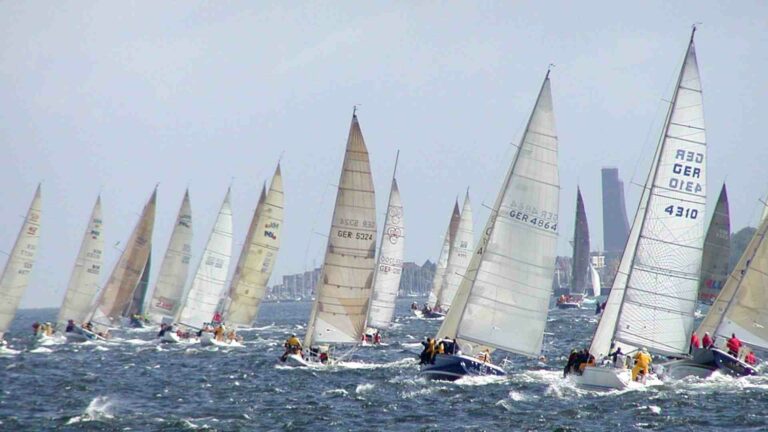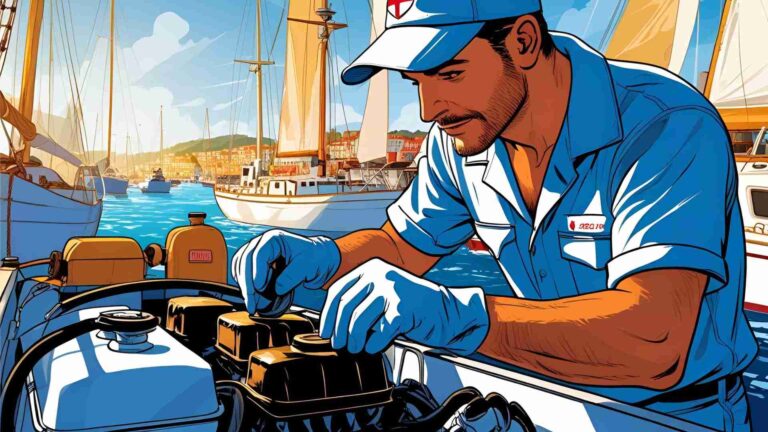Rosborough boats problems – Rosborough Has lost it!
Explore common issues with Rosborough boats, focusing on design flaws, user feedback, and performance. Get insights to make informed buying decisions.
Rosborough boats, known for their rugged, Downeast-style designs, have garnered a loyal following among boaters who value durability and versatility. Originally crafted in Nova Scotia, these pocket trawlers were among the first of their kind when introduced in 1987. After producing around 500 boats, Rosborough sold its molds to Eastern Boats in New Hampshire, where production continues. Models like the RF-246 and RF-18 are popular for their trailerable size, shallow draft, and sturdy construction, making them ideal for coastal cruising and overnight trips. However, user feedback from boating forums and reviews reveals recurring issues that potential buyers should consider. This article delves into the common problems with Rosborough boats, focusing on design, performance, and user experiences, while providing a balanced perspective with specifications, pricing, and comparisons to competitors.
Overview of Rosborough Boats
Rosborough boats are semi-displacement, trailerable vessels designed for stability and efficiency in varied conditions. The RF-246, a flagship model, and the smaller RF-18 are built for durability, often described as “brick-like” in construction due to their solid fiberglass hulls. These boats appeal to boaters seeking a compact, low-maintenance option for coastal cruising, fishing, or even long-distance trips like the Great Loop. Eastern Boats, which now manufactures Rosborough models, offers customization options, though some argue this has led to inconsistent quality.
Key Specifications of Rosborough RF-246
| Feature | Specification |
|---|---|
| Length Overall | 24’6″ (7.47 m) |
| Beam | 8’6″ (2.59 m) |
| Draft | 2’6″ (0.76 m) |
| Displacement | ~6,000 lbs (2,722 kg) |
| Fuel Capacity | 100-150 gal (378-567 L) |
| Engine Options | Single or twin outboards (90-200 hp), diesel options |
| Cruising Speed | 12-15 knots |
| Fuel Consumption | 2-3 gph at cruising speed (diesel) |
| Base Price (New) | ~$135,000 (varies with customization) |
Key Specifications of Rosborough RF-18
| Feature | Specification |
|---|---|
| Length Overall | 18′ (5.49 m) |
| Beam | 8’6″ (2.59 m) |
| Draft | 9″ (0.23 m) |
| Displacement | ~3,500 lbs (1,588 kg) |
| Fuel Capacity | 40-60 gal (151-227 L) |
| Engine Options | Single outboard (60-90 hp) |
| Cruising Speed | 10-15 knots |
| Fuel Consumption | 1-2 gph at cruising speed |
| Base Price (Used) | ~$6,000-$20,000 (hull only, varies by condition) |
Common Problems with Rosborough Boats
1. Unconventional Design and Aesthetics
One of the most frequently cited issues with Rosborough boats, particularly the RF-246, is their unconventional appearance. Forum users on platforms like The Hull Truth and Downeast Boat Forum have described the RF-246 as “fugly” or likened it to a “bastard love child of Eastern and Rosborough.” The slanted windows and boxy profile, especially on custom-built models, have drawn criticism for looking awkward or poorly executed. For instance, a user named El Mar bluntly called the design “fugly,” while south shore speculated that the windows were installed backward due to a “miscommunication” in design.
The RF-246’s appearance stems from its Downeast heritage, which prioritizes function over form. The high bow and deep-V hull are designed for stability in rough waters, but the aesthetic trade-off has alienated some buyers. Custom modifications, such as altered window placements or hull tweaks, exacerbate the issue. A user named novivin noted that Eastern Boats modified the keel, making it shorter and less effective in rough seas compared to the original Canadian design.
User Review (Cons): Keelboater remarked, “The bow and stern lights only add to the confusion here. I’m hoping this is a Photoshop job.” This highlights how design choices can detract from the boat’s appeal, even if they serve a functional purpose.
2. Quality Control Issues
Since Eastern Boats acquired Rosborough’s molds, some users have reported quality control concerns. thataway, a seasoned boater, mentioned hearing complaints about recent Rosborough models from dealers and forums, particularly regarding fit and finish. The shift from Canadian to U.S. production has led to changes in construction techniques, such as the use of a feathered keel, which some believe compromises seaworthiness. novivin expressed disappointment after seeing a modified RF-246 at a Boston boat show, noting that the altered keel reduced its grip in the water.
Custom orders, while a selling point, can also lead to inconsistencies. A user named slowzuki clarified that a particularly criticized RF-246 was a custom build, not representative of standard models. However, this suggests that Eastern Boats may struggle to maintain consistency when fulfilling bespoke requests.
User Review (Cons): mudhake quipped, “Ray Charles must have laid those windows out,” pointing to perceived sloppiness in design execution.
3. Performance and Handling Limitations
Rosborough boats are semi-displacement hulls, meaning they don’t plane as efficiently as planing hulls like those on Ranger Tugs or C-Dory boats. Users report that the RF-246 requires significant horsepower to achieve planing speeds, which increases fuel consumption and costs. gulfcoast john noted that the Rosborough “doesn’t plane as well as [a C-Dory Tom Cat], even with high power outboards.” The heavier hull (approximately 1,000 lbs more than a Ranger R-25) contributes to this, making it less agile in certain conditions.
At anchor, the RF-18 is described as “rolly polly” by Salty Dave, indicating instability in calm waters. This is a drawback for boaters who spend time fishing or relaxing at anchor. Additionally, the RF-246 can be challenging to maneuver in tight spaces due to its weight and windage, especially without a bow thruster. maddie mentioned that their RF-246 with twin 90hp outboards is “a little hard around the docks but good on a straight line cruise.”
User Review (Cons): Salty Dave shared, “I go out on Lake Ontario in my Rosborough 18, but I limit to days that are not very wavy. It is very rolly polly at anchor.”
4. Interior Space and Comfort
The RF-246 and RF-18 are compact, which limits interior space for extended trips. Users like BigGrin described the RF-246 as “tight for more than two people,” making it less suitable for families or groups. The V-berth in the RF-246 is smaller than competitors like the C-Dory 25, as noted by thataway, who mentioned needing to remove a hanging locker to accommodate taller individuals. The RF-18’s cuddy cabin is even more constrained, better suited for short overnights than long-term cruising.
Air conditioning, a desirable feature for warm climates, is another challenge. Noclutch expressed interest in a fully enclosed cabin for efficient AC use, but found that Rosborough models often rely on canvas enclosures, which are less effective. backinblue clarified that a hard cabin door is available, but enclosing the helm typically requires canvas, limiting AC efficiency while docked.
User Review (Cons): Snapdragon III criticized competitors like Ranger Tugs for packing too much into small boats, but noted that Rosborough’s spartan interiors, while durable, lack the “homey” feel of a C-Dory.
5. Towing and Trailering Challenges
Rosborough boats are marketed as trailerable, but their weight poses challenges. The RF-246, at around 6,000 lbs, requires a robust tow vehicle, such as a 3/4-ton or 1-ton truck with electric-over-hydraulic (EOH) brakes, as suggested by Comodave. Noclutch questioned whether their F150 with a 13,000-lb tow rating could safely handle the RF-246’s weight, especially with added gear. The RF-18, at 3,500 lbs, is easier to tow but still demands a capable vehicle.
User Review (Cons): journey on advised, “You can tow [a Rosborough] anywhere in the US with a V-8 truck,” but emphasized that heavier models like the RF-246 benefit from a diesel 4WD for safety.
Comparison with Competitors
To contextualize Rosborough’s issues, it’s helpful to compare them with similar trailerable trawlers like the Ranger Tug R-25 and C-Dory 25.
Comparison Table: Rosborough RF-246 vs. Ranger R-25 vs. C-Dory 25
| Feature | Rosborough RF-246 | Ranger R-25 | C-Dory 25 |
|---|---|---|---|
| Length | 24’6″ | 24’8″ | 25′ |
| Beam | 8’6″ | 8’6″ | 8’6″ |
| Weight | 6,000 lbs | 5,000 lbs | 4,500 lbs |
| Hull Type | Semi-displacement | Planing | Semi-displacement |
| Engine | Single/twin outboards | Single outboard | Single outboard |
| Cruising Speed | 12-15 knots | 15-20 knots | 15-18 knots |
| Fuel Efficiency | 2-3 gph (diesel) | 3-4 gph (gas) | 4 mpg (gas) |
| Base Price (New) | ~$135,000 | ~$110,000 | ~$90,000 |
| Interior Space | Spartan, smaller V-berth | Modern, roomier | Moderate, larger V-berth |
| Towing | Heavy, needs 3/4-ton truck | Moderate, V-8 sufficient | Light, V-8 sufficient |
Chart: Performance Comparison

User Experiences: Pros and Cons
Positive Feedback
- Durability: Users like gulfcoast john praise the RF-246’s “brick-like” construction, ideal for rough waters.
- Fuel Efficiency: maddie noted that their RF-246 with twin 90hp outboards “hardly uses fuel,” making it economical for long cruises.
- Customization: Eastern Boats’ willingness to accommodate custom requests, as experienced by Heidi Gallo with her RF-18, is a significant draw.
- Shallow Draft: The RF-18’s 9-inch draft, highlighted by Heidi Gallo, is perfect for skinny waters like Pleasant Bay.
Negative Feedback
- Aesthetics: El Mar and Ditchdigger criticized the RF-246’s appearance, calling it unappealing.
- Quality Control: thataway reported issues with recent models’ fit and finish.
- Interior Space: BigGrin found the RF-246 cramped for more than two people.
- Handling: Salty Dave described the RF-18 as unstable at anchor, limiting its versatility.
Pricing and Value
The RF-246’s base price of ~$135,000 is higher than competitors like the Ranger R-25 (~$110,000) and C-Dory 25 (~$90,000). Used RF-246s range from $60,000 to $100,000, depending on condition and modifications. The RF-18 is more affordable, with used hulls starting at $6,000, though outfitting with a modern outboard (e.g., 60hp 4-stroke, ~$8,000) increases costs. chancewayne noted that a used RF-18 at $6,000 is a better value than a $5,000 Sunbird with an outdated engine, given the Rosborough’s longevity.
Recommendations for Potential Buyers
- Inspect Custom Builds: If considering a custom RF-246, verify the quality of modifications. Request a sea trial to assess handling and stability.
- Evaluate Towing Needs: Ensure your tow vehicle can handle the RF-246’s weight. A 1-ton diesel truck is ideal for safety.
- Consider Alternatives: Compare the RF-246 with lighter, more modern options like the Ranger R-25 for better planing and interior space.
- Check for Quality Issues: Look for signs of poor fit and finish, especially on newer models built by Eastern Boats.
- Plan for Space Needs: For extended trips, ensure the V-berth and cabin meet your comfort requirements.
Conclusion
Rosborough boats, particularly the RF-246 and RF-18, offer rugged durability and fuel efficiency for coastal cruising and shallow-water adventures. However, their unconventional design, quality control issues, and handling limitations have drawn criticism from users. While their solid construction and customization options are strengths, potential buyers must weigh these against cramped interiors, towing challenges, and higher costs compared to competitors like Ranger Tugs and C-Dory. By understanding these common problems and carefully evaluating their needs, boaters can make informed decisions about whether a Rosborough boat is the right fit.
Happy boating!
Share Rosborough boats problems – Rosborough Has lost it! with your friends and leave a comment below with your thoughts.
Read 5 Most Common Problems with Caravelle Razor Boat until we meet in the next article.






